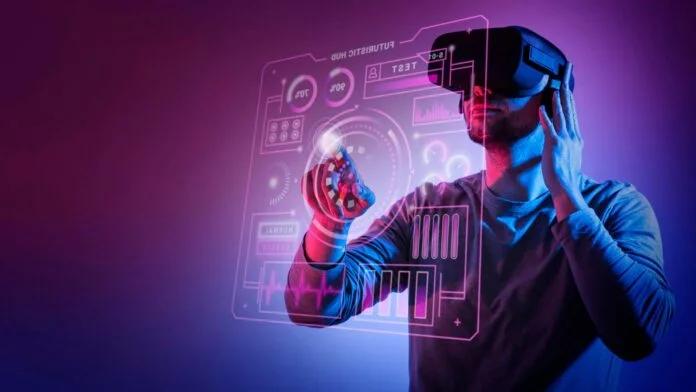Introduction:
In this blog post, we will delve into the fascinating realm of mixed reality, where the virtual and real worlds intertwine, creating unique experiences that captivate our senses and imagination. From the basics of mixed reality to its practical applications, we will uncover the magic and potential of this cutting-edge technology.
What is Mixed Reality?
Mixed reality (MR) is a cutting-edge technology that merges elements of both augmented reality (AR) and virtual reality (VR). Unlike AR, which overlays virtual objects onto the real world, and VR, which immerses users entirely in a virtual environment, mixed reality combines the best of both worlds. It seamlessly integrates virtual objects into the real environment, enabling users to interact with and manipulate these digital elements in a natural and intuitive manner.
Understanding the Spectrum: AR, VR, and MR
To comprehend mixed reality fully, it’s crucial to grasp the differences and similarities between AR, VR, and MR. Augmented reality adds virtual elements to the real world but does not blend them fully. Virtual reality, on the other hand, transports users entirely to a computer-generated environment. MR, sitting at the center of the spectrum, blends virtual and real elements cohesively, enabling users to interact with the digital content while remaining grounded in the physical world.
The Evolution of Mixed Reality Technology
The concept of mixed reality dates back several decades, but it’s only in recent years that technological advancements have made it a practical reality. We’ll trace the evolution of MR technology, from its early experimental stages to the sophisticated devices and applications available today.
Applications of Mixed Reality in Various Industries
The versatility of mixed reality technology has paved the way for its integration into various industries. We’ll explore how MR is revolutionizing fields such as gaming, architecture, manufacturing, retail, and more. The potential of MR to enhance user experiences, increase productivity, and unlock new possibilities is boundless.
Challenges and Limitations of Mixed Reality
Despite its promises, mixed reality faces several challenges that need to be addressed for widespread adoption. Issues like hardware limitations, user acceptance, data privacy, and security concerns require careful consideration. Understanding these challenges will help us chart a path towards a more seamless MR experience.
Future Prospects of Mixed Reality
As the technology continues to evolve, the future of mixed reality holds immense promise. We’ll explore emerging trends, ongoing research, and potential breakthroughs that may shape the next generation of MR devices and applications.
Real-World Examples of Mixed Reality in Action
To illustrate the real-world impact of mixed reality, we’ll delve into some notable examples of MR implementations. From interactive museum exhibits to immersive training simulations, these case studies demonstrate how MR is reshaping various aspects of our lives.
How Mixed Reality is Changing the Entertainment Industry
The entertainment industry has embraced mixed reality as a tool to captivate audiences like never before. We’ll dive into how MR is enhancing gaming experiences, transforming storytelling in films and TV shows, and creating interactive performances in the world of arts and music.
The Impact of Mixed Reality on Education and Training
Education and training are benefiting immensely from mixed reality technology. We’ll explore how MR is revolutionizing classroom learning, professional development, and specialized training across different sectors, making learning more engaging and effective.
Mixed Reality and Healthcare:
Advancements and Innovations In the realm of healthcare, mixed reality has opened up a new frontier of possibilities. From medical training simulations to patient care and rehabilitation, we’ll discuss how MR is advancing healthcare practices and improving patient outcomes.
Ethical Considerations in the World of Mixed Reality As with any powerful technology, mixed reality raises ethical concerns that require careful contemplation. We’ll address issues related to privacy, addiction, data ownership, and potential misuse of MR technology.
Conclusion:
Embracing the Blend of Virtual and Real In conclusion, mixed reality represents an extraordinary fusion of the virtual and real worlds. With its increasing prevalence in various domains, we must embrace this transformative technology responsibly and ethically. The future possibilities are endless, and by understanding and harnessing the power of mixed reality, we can shape a brighter and more interconnected future.

